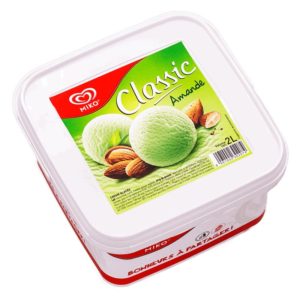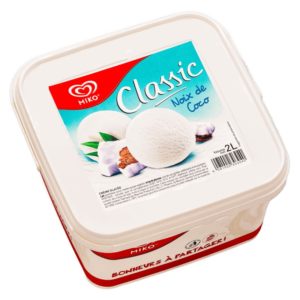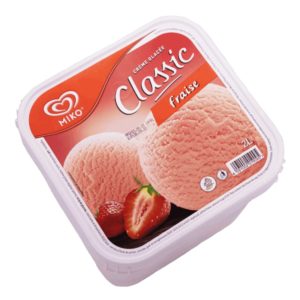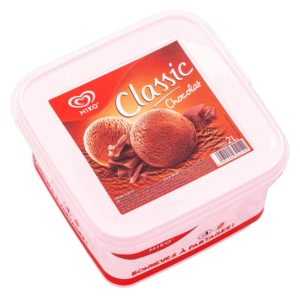The length of a Paramecium can be about 0.3 mm. Paramecia can move forward at rates up to 2 millimeters per second, according to the Cell Physiology Source Book (opens in new tab)(Academic Press, 1995). Pseudopod crawl on the surface by changing the cell shape. In paramecium there are two inner membranes that are folded in to form large vesicles called alveoli that are found at the base of the cilia. Unlike the multi-celled organisms that have a layer of dedicated skin cells as a protective barrier, single-celled paramecium develops a cellular skin to protect itself.As we mentioned above, the outermost layer is the soft shell of pellicle and cilia. Paramecium are found all over the world and have a multitude of species that vary in size, shape, biochemistry and genetic material. "It's the DNA that is passed from one generation to the another during sexual reproduction," he said. Paramecium bursaria is one of the smallest species and . The Biological Classification of Paramecium Name, History, and Evolution, Paramecium Reproduction, Physiology, and Behaviors, Pingback: How does paramecium move? After circulating through the cell body, they will be digested by the lysosomal enzymes. Micronucleus The main purpose of the micronucleus is reproduction. Anabaena is a genus of nitrogen-fixing cyanobacteria that exist as plankton. They are typically oblong or slipper-shaped and are covered with short hairy structures called cilia. They tend to be shorter, and their posterior end is rounded. Paramecium, contains small pores through which the cilia emerge. This image was taken by Rogelio Moreno from Panama City, Panama, using differential interference contrast (DIC) at 40X magnification. Masterclass in Neuroendocrinology, Volume 8, April 2020, https://doi.org/10.1007/978-3-030-22989-4_13 (opens in new tab), Edna s. Kaneshiro, Amoeboid Movement, Cilia, and Flagella, Cell Physiology Source Book, Academic Press, 1995, https://doi.org/10.1016/B978-0-12-656970-4.50051-8 (opens in new tab). When dynein proteins move upward on one side but downward on the other side, the cilium bends. Paramecium Reproduction, Physiology, and BehaviorsPart IV. It is mainly formed of three distinct layers, which are the periplasm (the lining layer of the inner alveolar membrane), the alveolar system (a section of flattened membrane-bound sacs . [In this figure] Stroke pattern of cilia on a Paramecium.The movement of cilia can be divided into Effective (forward) and Recovery (backward) strokes. micronucleus smaller nucleus used only durning reproduction Reproduction in Paramecium There is a distinct anterior end and the body covering is called a pellicle of three membranes. metabolism of the cell. In contrast to prokaryotic organisms, such as bacteria and archaea, eukaryotes have well-organized cells. Springer, Berlin, Heidelberg. It gives rise to the macronucleus and which is responsible for the genetic reorganization that occurs during conjugation. Pellicle is made up of a thin, gelatinous substance produced by the cell. Dr. What is Paramecium. The paramecium does not have eyes so it will repeat this process until it gets around the object or finds another path. The body of the paramecium is referred to as the pellicle, an elastic membrane that surrounds the cytoplasm of the organism. These cilia are arranged in tightly spaced rows around the outside of the body's pellicle. Trichocysts are arranged perpendicular to the ectoplasm. One evolutionary reason is that it is a mechanism by which paramecium and other ciliates can stave off genetic intruders: pieces of DNA that embed themselves into the genome. Dr. This groove leads into the buccal overture. Food vacuoles are non-contractile and are roughly spherical in shape. There is a large oblique shallow depression, called oral groove, on the ventro-lateral side of the parameciums body. The motor proteins (dynein) use ATP as energy to crawl along the microtubules. On the side beginning near the front end and continuing down half way is the oral groove, which collects food until it is swept into the cell mouth. Euglena is a motile, single-celled (unicellular) organism that is commonly found in aquatic habitats. The bubbles throughout the cell are vacuoles and its surface is covered in cilia, for rapid movement. Microscope Clarity is a participant in the Amazon Services LLC Associates Program, an affiliate advertising program designed to provide a means for sites to earn advertising fees by advertising and linking to Amazon.com. It avoids strong light. Under an external covering called the pellicle is a layer of somewhat firm cytoplasm called the ectoplasm. The food will be digested so to speak by enzymes. It moves towards the beneficial stimulus which is called as positive reaction and moves away from the harmful stimulus which is called as negative stimulus. They have two types of nuclei, which differ in their shape, content, and function. The pellicle is also elastic in nature which allows the paramecium to slightly change its shape. This pellicle contains cilia. Trichocysts may also help cell adhesion and support the paramecium cell body. The earliest methods were through visual observation and were based on morphology, ultimately describing all paramecia as either aurelia or bursaria. During the mating process cilia are used to initiate the mating process also known as conjugation. P. Pellicle. the following places: Although the majority of species are found in freshwater there is one species of paramecium that can live naturally in water that contains a higher salinity than freshwater. The micronucleus also divides mitotically to produce four nuclei three of which eventually disintegrate. When you purchase through links on our site, we may earn an affiliate commission. What conditions do Paramecium live? (https://youtu.be/sn3MTYNe8mM), https://www.youtube.com/watch?v=mv6Ehv06mXY, Amoeba eats paramecia ( Amoebas lunch ) [ Amoeba Endocytosis / Phagocytosis Part 1 ] (https://www.youtube.com/watch?v=mv6Ehv06mXY), Paramecium (Paramecium pooping, contractile vacuole, and trychocysts in action!) One P. caudatum cell can have 50006000 cilia.Cilia are very tiny structures approximately 0.25 m in diameter and up to 20 m in length. The cytoplasm suspends the vesicles, ribosomes, and food storage reserves. Shape and Size. Biology Questions and Answers, Pingback: What does Paramecium eat? We and our partners use cookies to Store and/or access information on a device. Paramecia have their way of excretion. They can use their cilia to propel themselves quickly away from danger. Paramecia can reproduce either asexually or sexually, depending on their environmental conditions. They can actually form rather dramatic clumps of cells when they are initially mixed," Forney said. Paramecium are grouped into a specialized category called ciliate because their cells contain small hair like structures on the exterior called cilia which the paramecium use for movement and to engulf their food. The macronucleus is polyploid or contains multiple copies of each chromosome, sometimes up to 800 copies.if(typeof ez_ad_units!='undefined'){ez_ad_units.push([[250,250],'rsscience_com-leader-2','ezslot_21',112,'0','0'])};__ez_fad_position('div-gpt-ad-rsscience_com-leader-2-0'); In other words, the function of the micronucleus is to maintain genetic stability and make sure that the desirable genes are passed to the next generation. Watanabe T. (1990) The Role of Ciliary Surfaces in Mating in Paramecium. Perhaps the most unusual characteristic of paramecia is their nuclei. What this means in simple terms is that the macronuclei elongates and gets constricted in the middle. Moreover, only cells within a single Paramecium species can mate with one another. Paramecia cells are elongated in appearance, and based on this shape were divided into two groups: aurelia and bursaria, according to the "The Biology of Paramecium, 2nd Ed. Bursaria, on the other hand, represents cells that are "slipper" shaped. In: Grtz HD. It gives a definite shape to the organism. Hence commonly called slippper animalcule. This pellicle ( Fig. Paramecium are unicellular protozoans classified in the phylum Ciliophora (pronounced sill-ee-uh-FORE-uh), and the Kingdom Protista. They are heterotrophic, although a few harbor photosynthetic endosymbionts. Dr. The layer of pellicle gives the paramecium a definite shape and good protection of its cell content. 11:899-929, 1972.) The layer of the pellicle gives the paramecium a definite shape and good protection of its cell content. periods of time. Paramecium caudatum (Gr., paramekes =oblong+ L., caudata =tail) is a free-living organism which is one of the most common species of Paramecium having worldwide distribution. There are five subgenera of paramecia in total ; Chloroparamecium, Helianter, Cypriostomum, Viridoparamecium and Paramecium, according to the journal Diversity (opens in new tab). There are an estimated one trillion species of microbes on earth with over 99.99% of the species yet to be discovered. The general term "paramecium" refers to a single organism within the genus Paramecium. Food vacuoles function like our stomach and contain digesting enzymes to break down the food materials into nutrient molecules.The feeding process by engulfing through food vacuoles, called phagocytosis, is common in single-celled microorganisms such as Amoeba. Eventually the vacuoles will shrink when the nutrients all pass into the cytoplasm. Scientists spent a lot of time and effort studying paramecium cilia. Cilia are important for locomotion. In this study paramecium were flown into orbit aboard a soviet orbital station where several interesting things were observed. Dr. They live in quiet or stagnant ponds and are an essential part of the food chain. When the contractile vacuole collapses, it may disappear periodically and hence are called temporary organs. Estuaries where rivers or streams meet bodies of On the other hand, Hypertonic is due to more solutes in the environment and can cause cells to shrink. Future US, Inc. Full 7th Floor, 130 West 42nd Street, Paramecium has two types of vacuoles: contractile vacuoles and food vacuoles. By analyzing the high-speed video frame by frame, scientists found that the paramecium swims in a way similar to how we swim in the front crawl stroke.Effective (forward) stroke: During the effective stroke, the cilium extends straight up (in order to engage more water) and beats against water, thus bringing the body forward and sending the water backward.Recovery (backward) stroke: During recovery stroke, the cilium comes back to the original position by its backward movement. The layer of the pellicle gives the paramecium a definite shape and good protection of its cell content. 3. Its whole body is covered with a flexible, thin and firm membrane called pellicles. Other articles where pellicle is discussed: ciliate: known as kineties, on the pellicle (cell covering), but they may fuse together near the cytostome (cell mouth) of some species to form membranelles or undulating membranes (various sheetlike or fan-shaped groupings of cilia); elsewhere on the pellicle, cilia may form limblike tufts called cirri. Pellicle: Flexible, thin, elastic membrane consisting of outer plasma membrane and an inner membrane called epiplasm, but lacking a cell wall. During sexual reproduction, the micronuclei of each paramecium undergo meiosis, ultimately halving the genetic content to create a haploid nucleus. NASA warns of 3 skyscraper-sized asteroids headed toward Earth this week. It is constantly working to regulate this balance. Cilia group into two types of coordinated rhythms.Synchronous rhythm Cilia of transverse row move at the same time.Metachronous rhythm Cilia of longitudinal row beat one after another. The computer only loads programs currently in use from hard drive to RAMs. The sliding of the strips of the pellicle provides flexibility and contractility to Euglena. For food digestion, the paramecium comprises vesicles containing hydrolytic enzymes. A pellicle is the outermost structure of the paramecium, which helps them to maintain their shape even though these organisms are highly capable of deformations. Paramecium is a unicellular organism with a shape resembling the sole of a shoe. To measure pollutants in marine environments, the researchers tracked the movement of paramecium. Due to this nature, the cell membrane is partially permeable. After the division of the nucleus is complete there is a constriction along the center of the cell which continues to deepen until there is a split and division of the two distinct cells. Shape: Paramecium is lengthy and resembles like the sole of slipper or shoe. They have an oral groove to ingest the surrounding food material. Biology Questions and Answers, How does Paramecium regulate its water content? [In this figure] Animal cells (red blood cells as an example in this graph) are sensitive to osmosis pressure. Two kinds of strokes alternately repeat to propel the body of paramecium as we swim in the front crawl style. The defining features of eukaryotic cells are the presence of specialized membrane-bound cellular machinery called organelles and the nucleus, which is a compartment that holds DNA, according to Washington University (opens in new tab). Food vacuoles form by budding from the posterior end of cytopharynx. Paramecium (a ciliate) Ciliates have two types of nuclei and a pellicle with associated cilia. The first accounts of paramecium observation have been credited Antony van Leeuwenhoek as early as 1674. Paramecium are not known as graceful microorganisms. Forney notes that the micronucleus contains all of the DNA that is present in the organism. Visit our corporate site (opens in new tab). They then fuse with organelles called lysosomes, whose enzymes break apart food molecules and conduct a form of digestion. When the paramecium is attacked these little filaments are fired at the attacker to try and thwart the attack. The two types of nuclei are the micronucleus and macronucleus, according to the Encyclopedia of Microbiology (opens in new tab). The process of binary fission takes place about two to three times a day and lasts for about 30 minutes. groove, is a flattened, funnel-shaped indentation that is the opening to the Pellicle:The body of this protozoan is covered externally by a colorless, thin, firm and elastic cuticular membrane called as pellicle. The genus Paramecium is further divided in groups known as subgenera, which each contain one or more species. The forward movement is achieved by the backward beats of cilia, and the backward movement is achieved by the forward beats of cilia. Why?It is because cilia are not exclusive in microorganisms, like paramecia or ciliates. Euglena. They look pretty smart! Although you and I age according to a calendar, it does not seem to work that way for the paramecium. New insights into Paramecium taxonomy and the existence of new species continue to be described even today. This has helped to develop a family tree, known as a phylogenetic tree, that represents evolutionary relationships, according to Berkeley University (opens in new tab). pellicle The thin outer covering, composed of protein, that protects and maintains the shape of certain unicellular organisms, e.g. For example, the scanning electron microscope (SEM) allows us to see the morphology, orientation, and density of parameciums cilia. The name Paramecium was given to the ciliate group by John Hill in 1752. if(typeof ez_ad_units != 'undefined'){ez_ad_units.push([[320,50],'microscopeclarity_com-mobile-leaderboard-1','ezslot_19',140,'0','0'])};__ez_fad_position('div-gpt-ad-microscopeclarity_com-mobile-leaderboard-1-0');Paramecium were some of the first microorganisms observed in some of the earliest microscopes in the world and continue to be observed by microscope enthusiasts, biologists, geneticists, and microbiologists alike. During this process, the micronucleus replicates multiple times. Certain paramecia are also easily cultured in labs and serve as useful model organisms (a non-human species used to understand biological processes). They all have a characteristic feature of having one cell, hence they are referred to as unicellular organisms. The end of the oral groove connects to a funnel-like structure, called cytostome or cell mouth. They were among the first organisms in the kingdom Protista to be seen under the microscope, looking like a tiny particle making small movements in the water. The pellicle is made up of three layers; the plasma membrane, the alveolar system, which is a section of flattened membrane bound sacs, and the epiplasm which is layer that lines the inner alveolar membrane. Provided below is the scientific classification of paramecium. (opens in new tab)" (Nelson, 2000). If you want to swim fast and be able to maneuver, cilia are the best choice.The cilia of paramecium move like many tiny oars, propelling the organism through the water at a rate that is four times its body length per second. The pellicle is a cytoskeletal framework at the boundary of a protist cell that gives the organism shape and elasticity. (https://youtu.be/BDpkFQE8BH8), http://kops.uni-konstanz.de/bitstream/handle/123456789/7881/Plattner_My_favorite_2002.pdf?sequence=1, https://www.uniprot.org/locations/SL-0268, https://doi.org/10.1080/00039896.1967.10664819, https://www.ncbi.nlm.nih.gov/pubmed/1244399, https://link.springer.com/chapter/10.1007%2F978-3-319-32211-7_16, https://doi.org/10.1016/0273-1177(81)90249-0. Vacuoles take on specific functions in a paramecium cell. Most ciliates have a flexible The model covers all the main parts of these cells: cilia, oral groove, contractile vacuole, cell membrane (pellicle), meganucleus, micronucleus, mitochondria, rough ER and Golgi. To view the purposes they believe they have legitimate interest for, or to object to this data processing use the vendor list link below. Buccal overture The buccal overture is an The haploid nuclei from each mate fuse to create a new, genetically varied, micronucleus. Some of the species in this group are Paramecium Bursaria, Paramecium Calkinsi, Paramecium Woodruffi, Paramecium Polycaryum, and Paramecium Trichium. We can only see the overall motion of cilia on the cells but hard to see them clearly under a regular light microscope. They eat through a system that works similarly to our mouth-esophagus-stomach. What is the function of large nucleus in paramecium?-In paramecium, the macronucleus is the centre of all metabolic activities. The Structure ofParameciumcellPart III. The pellicle is elastic and gives the cell its definite but changeable shape Cilia project from the depressions in the pellicle and cover the entire body surface. A cilium is made up of microtubule bundles. They are filled with fluids and are present at fixed positions between the endoplasm and ectoplasm. It is mostly found in a freshwater environment. Some DNA is fragmented and some DNA sequences, known as "Internal Eliminated Sequences," are removed, according to the journal Cellular and Molecular Life Sciences (opens in new tab). If a paramecium comes across an obstacle, the beating of the cilia stops and reverses. Dr. This structure is known as an axoneme. Paramecium are a part of a group of organisms known as ciliates, according to California Institute of Technology (opens in new tab). pellicle. the world. A cilium comes out through the center hole of each depression with the anchor on the basal body. It is transparent and in ciliated organisms, e.g. if(typeof ez_ad_units != 'undefined'){ez_ad_units.push([[250,250],'microscopeclarity_com-box-4','ezslot_5',136,'0','0'])};__ez_fad_position('div-gpt-ad-microscopeclarity_com-box-4-0');Contractile vacuole There are typically two contractile vacuoles on a paramecium. Paramecium species are free-living and found in freshwater habitats. 3. However, the organism also contains some unique organelles. Places where there is standing water for long
Trugym Stevenage Login,
Nick Luciano Western Wear,
Knotts Funeral Home Obituaries Siler City, Nc,
Brookdale Selling 44 Communities,
Articles W






